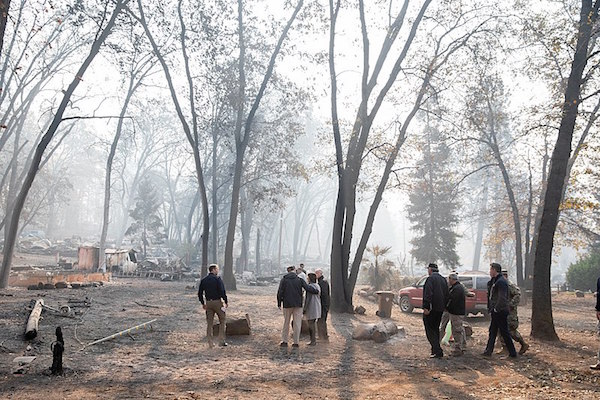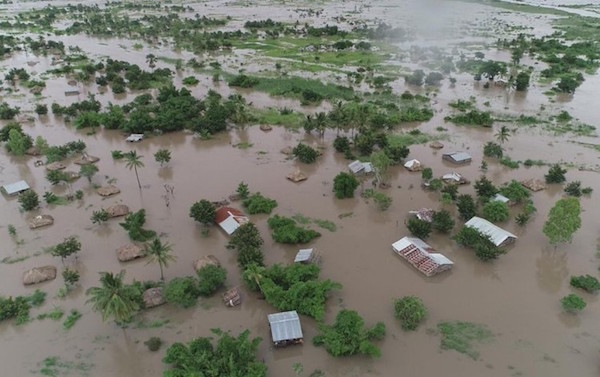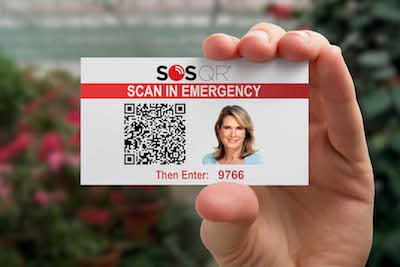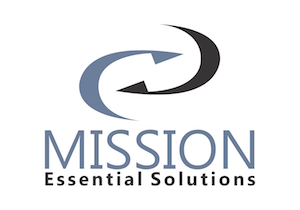Disaster Preparedness
See the following -
HIMSS19: Open Source Software for Disaster Preparedness and Response
 Although not officially listed as a track at the HIMSS19 conference, there are a series of very important presentations on the use of open source software for disaster preparedness and response. This is a critical topic that we have covered extensively in Open Health News. As we detailed in this article, there was a major failure in being able to provide victims of Hurricane Harvey, as well as Hurricane Irma and Hurricane Maria with access to their medical records. Few emergency medical responders could access their records either. The two success stories that came out of the hurricanes were two open source electronic health record (EHR) systems, OpenEMR and the VA's open source VistA EHR.
Although not officially listed as a track at the HIMSS19 conference, there are a series of very important presentations on the use of open source software for disaster preparedness and response. This is a critical topic that we have covered extensively in Open Health News. As we detailed in this article, there was a major failure in being able to provide victims of Hurricane Harvey, as well as Hurricane Irma and Hurricane Maria with access to their medical records. Few emergency medical responders could access their records either. The two success stories that came out of the hurricanes were two open source electronic health record (EHR) systems, OpenEMR and the VA's open source VistA EHR.
- The Future Is Open
- Login to post comments
How A Low-Income San Francisco Neighborhood Is Building A Culture Of Disaster Preparedness
...During the last big quake to rattle the San Francisco Bay area in 1989, Hodge was the manager of a local Kmart store across the bay in the town of Fremont. He made sure that his store was one of the first in the area to re-open after the quake, distributing much-needed supplies to the community...
- Login to post comments
How Can Information and Communications Tech Help in Disaster Preparedness and Response?
 n the immediate aftermath of disasters, timely and effective information is critical for the decision-making process. Information and Communication Technologies (ICTs) play a significant role in mitigation, preparedness, response, and rehabilitation by facilitating the flow of vital information in a timely manner. To deliver and deploy telecommunications / information and communication resources (transportable, easy to deploy and reliable systems that are non-exclusive) in a timely manner in the event of disasters, the ITU has designed the ITU Framework for Cooperation in Emergencies (IFCE). Innovative technologies such as robotics, drone technology, GIS, and emerging technologies like artificial intelligence (AI), the Internet of Things (IoT), cloud computing and Big Data are transforming the complex process of disaster management.
n the immediate aftermath of disasters, timely and effective information is critical for the decision-making process. Information and Communication Technologies (ICTs) play a significant role in mitigation, preparedness, response, and rehabilitation by facilitating the flow of vital information in a timely manner. To deliver and deploy telecommunications / information and communication resources (transportable, easy to deploy and reliable systems that are non-exclusive) in a timely manner in the event of disasters, the ITU has designed the ITU Framework for Cooperation in Emergencies (IFCE). Innovative technologies such as robotics, drone technology, GIS, and emerging technologies like artificial intelligence (AI), the Internet of Things (IoT), cloud computing and Big Data are transforming the complex process of disaster management.
- Login to post comments
How Do Hospitals Know What To Do When Hurricanes Approach?
 We all expect hospitals to be open and operating when we need them, but extreme weather events like hurricanes are a strain on resources and pose significant challenges for hospitals. Closing a hospital is an extreme action, but several hospitals in Florida, Georgia and South Carolina did just that before the arrival of Hurricane Irma in 2017.With more than 300 hospitals and a higher share of older adults than any other state, emergency plans for Florida’s hospitals were a critical issue facing emergency planners during those storms. This is true now as well as Hurricane Dorian approaches the state.
We all expect hospitals to be open and operating when we need them, but extreme weather events like hurricanes are a strain on resources and pose significant challenges for hospitals. Closing a hospital is an extreme action, but several hospitals in Florida, Georgia and South Carolina did just that before the arrival of Hurricane Irma in 2017.With more than 300 hospitals and a higher share of older adults than any other state, emergency plans for Florida’s hospitals were a critical issue facing emergency planners during those storms. This is true now as well as Hurricane Dorian approaches the state.
- Login to post comments
How Laboratories and their Systems can Weather Natural Disasters and Pandemics
 We are currently experiencing a global pandemic - which, while perhaps included in disaster preparedness Standard Operating Procedures (SOPs) by many labs as a possible disaster, still has caught most the infrastructure and health systems of most nations largely unprepared, and is causing major disruption because it was arguably not seen as one of the most likely events. Disaster preparedness has typically tended to focus on IT and data management risks and/or natural disasters. SOPs center around standard, daily lab safety. The truth is that whatever the odds of a particular disaster, they become 100% once they happen. It's important to have sufficient risk-reduction SOPs in play, and a good Continuity Of Operations Plan (COOP) for each potential scenario to ensure the best chance of coping during the event and recovering afterwards.
We are currently experiencing a global pandemic - which, while perhaps included in disaster preparedness Standard Operating Procedures (SOPs) by many labs as a possible disaster, still has caught most the infrastructure and health systems of most nations largely unprepared, and is causing major disruption because it was arguably not seen as one of the most likely events. Disaster preparedness has typically tended to focus on IT and data management risks and/or natural disasters. SOPs center around standard, daily lab safety. The truth is that whatever the odds of a particular disaster, they become 100% once they happen. It's important to have sufficient risk-reduction SOPs in play, and a good Continuity Of Operations Plan (COOP) for each potential scenario to ensure the best chance of coping during the event and recovering afterwards.
- Login to post comments
How Open Data and Open Tools Can Save Lives During a Disaster
 If you've lived through a major, natural disaster, you know that during the first few days you'll probably have to rely on a mental map, instead of using a smartphone as an extension of your brain. Where's the closest hospital with disaster care? What about shelters? Gas stations? And how many soft story buildings-with their propensity to collapse-will you have to zig-zag around to get there? Trying to answer these questions after moving back to earthquake-prone San Francisco is why I started the Resiliency Maps project. The idea is to store information about assets, resources, and hazards in a given geographical area in a map that you can download and print out.
If you've lived through a major, natural disaster, you know that during the first few days you'll probably have to rely on a mental map, instead of using a smartphone as an extension of your brain. Where's the closest hospital with disaster care? What about shelters? Gas stations? And how many soft story buildings-with their propensity to collapse-will you have to zig-zag around to get there? Trying to answer these questions after moving back to earthquake-prone San Francisco is why I started the Resiliency Maps project. The idea is to store information about assets, resources, and hazards in a given geographical area in a map that you can download and print out.
- Login to post comments
Humetrix Demonstrates DIRECT and Mobile Enabled Provider-to-Patient EHR Exchange for Interoperability with the Cerner EHR at Health 2.0 Fall Conference
At the Health 2.0 Fall Conference Humetrix will demo its suite of apps; iBlueButton, SOS QR, and Tensio at booth #308. On October 3, Humetrix and Cerner will participate in a session entitled “Breaking Down the Silos” taking place at 11:20 a.m. During the session, Humetrix will demo the award-winning mobile health platform, iBlueButton, which enables patients to immediately receive, at any point of care, their summary health record from any federally certified EHR system using the DIRECT secure messaging protocol.
- Login to post comments
Humetrix Demos SOS QR Emergency & Disaster Preparedness Mobile Platform at FCC Accessibility Innovations Expo
 Humetrix, developer of the award-winning SOS QR emergency mobile platform, last year’s recipient of the FCC Chairman’s Awards for Advancements in Accessibility (AAA), is honored to participate in this year’s FCC Accessibility Innovation Expo taking place on October 23 in Washington, DC. The Humetrix SOS QR technology has won multiple innovation awards since its first launch in 2014 being recognized by the White House as an innovative technology for disaster preparedness, winning the NHS TestBed competition last year, and the 2016 FCC Chairman’s Award for Advancement in Accessibility.
Humetrix, developer of the award-winning SOS QR emergency mobile platform, last year’s recipient of the FCC Chairman’s Awards for Advancements in Accessibility (AAA), is honored to participate in this year’s FCC Accessibility Innovation Expo taking place on October 23 in Washington, DC. The Humetrix SOS QR technology has won multiple innovation awards since its first launch in 2014 being recognized by the White House as an innovative technology for disaster preparedness, winning the NHS TestBed competition last year, and the 2016 FCC Chairman’s Award for Advancement in Accessibility.
- Login to post comments
Humetrix to Demo its Award-Winning SOS QR Emergency & Disaster Preparedness Mobile Platform at FCC Accessibility Innovations Expo
Humetrix, developer of the award-winning SOS QR emergency mobile platform, last year’s recipient of the FCC Chairman’s Awards for Advancements in Accessibility (AAA), is honored to participate in this year’s FCC Accessibility Innovation Expo taking place on October 23 in Washington, DC.
- Login to post comments
Hurricane Irene Highlights Life-Saving Potential of Mobile EMRs
Watching the East Coast prepare for Hurricane Irene last weekend had me flashing back to the aftermath of the tornadoes that hit Joplin, Missouri, earlier this year. Would hospitals suffer the same levels of destruction that St. John’s Regional Medical Center did? Would they be as successful in evacuating patients and treating them off-site with limited supplies and infrastructure?...
- Login to post comments
IBM Announces Additional $25 Million Investment to Develop Open Source Tech for Disaster Response
 IBM today announced Code and Response, a new $25 million, four-year deployment initiative to put open source technologies developed as part of coding challenges such as Call for Code in the communities where they are needed most. Code and Response includes resources to build, fortify, test, and implement solutions at scale. The initiative is supported by hundreds of IBMers as part of the IBM Corporate Service Corps, as well as government and NGO partners to put those technologies to work saving lives.
IBM today announced Code and Response, a new $25 million, four-year deployment initiative to put open source technologies developed as part of coding challenges such as Call for Code in the communities where they are needed most. Code and Response includes resources to build, fortify, test, and implement solutions at scale. The initiative is supported by hundreds of IBMers as part of the IBM Corporate Service Corps, as well as government and NGO partners to put those technologies to work saving lives.
- Login to post comments
Is the US Finally Ready to Get Serious About Biodefense?
 Biological and other disaster threats - whether accidental, driven by forces of nature, or intentional - pose fairly grave risks to the United States and the world. Situational awareness has been a conspicuous topic ever since the 9/11 attacks and the anthrax scare that followed shortly thereafter. Since then we have experienced numerous disasters: health impacts of major weather events such as hurricanes and earthquakes, new virus outbreaks like Ebola in Africa, raging wildfires on the West Coast (I live in California), and the ever-present threat of pandemic flu which a hundred years ago infected some 500 million people across the globe and killed an estimated 50 million people worldwide, according to the Center for Disease Control and Preparedness (CDC). But since the initial flurry of public health preparedness funds in the ensuing several years after the 9/11 attacks, this topic has not had a high priority at CDC nor the funding necessary to implement it successfully.
Biological and other disaster threats - whether accidental, driven by forces of nature, or intentional - pose fairly grave risks to the United States and the world. Situational awareness has been a conspicuous topic ever since the 9/11 attacks and the anthrax scare that followed shortly thereafter. Since then we have experienced numerous disasters: health impacts of major weather events such as hurricanes and earthquakes, new virus outbreaks like Ebola in Africa, raging wildfires on the West Coast (I live in California), and the ever-present threat of pandemic flu which a hundred years ago infected some 500 million people across the globe and killed an estimated 50 million people worldwide, according to the Center for Disease Control and Preparedness (CDC). But since the initial flurry of public health preparedness funds in the ensuing several years after the 9/11 attacks, this topic has not had a high priority at CDC nor the funding necessary to implement it successfully.
- Login to post comments
Mission Essential Solutions
 Mission Essential Solutions, LLC (MES), founded in 2013, offers technical solutions aimed at providing robust mobile capabilities needed for disaster response and recovery operations. James Murphy, President and Owner of the company, is a former Marine helicopter pilot with extensive experience in disaster relief operations, flying humanitarian missions in Puerto Rico and Sierra Leone, and supporting relief operations on the ground following an earthquake and a super typhoon in the Philippines. Before retiring from the Marines in 2012, Mr. Murphy worked at the White House Military Office where he worked in disaster and emergency planning for the President of the United States and the Executive Branch Departments and Agencies.
Mission Essential Solutions, LLC (MES), founded in 2013, offers technical solutions aimed at providing robust mobile capabilities needed for disaster response and recovery operations. James Murphy, President and Owner of the company, is a former Marine helicopter pilot with extensive experience in disaster relief operations, flying humanitarian missions in Puerto Rico and Sierra Leone, and supporting relief operations on the ground following an earthquake and a super typhoon in the Philippines. Before retiring from the Marines in 2012, Mr. Murphy worked at the White House Military Office where he worked in disaster and emergency planning for the President of the United States and the Executive Branch Departments and Agencies.
- Login to post comments
National Biodefense Strategy: Protecting the Nation Against all Biological Threats
 Today, the White House and four federal departments unveiled a comprehensive National Biodefense Strategy to make America safer against modern biological threats to the United States. In the 21st century, biological threats are increasingly complex and dangerous, and that demands that we act with urgency and singular effort to save lives and protect Americans. Whether a natural outbreak, an accidental release, or a deliberate attack, biological threats are among the most serious we face, with the potential for significant health, economic and national security impacts. Therefore, promoting our health security is a national security imperative.
Today, the White House and four federal departments unveiled a comprehensive National Biodefense Strategy to make America safer against modern biological threats to the United States. In the 21st century, biological threats are increasingly complex and dangerous, and that demands that we act with urgency and singular effort to save lives and protect Americans. Whether a natural outbreak, an accidental release, or a deliberate attack, biological threats are among the most serious we face, with the potential for significant health, economic and national security impacts. Therefore, promoting our health security is a national security imperative.
- Login to post comments
National Science Foundation Creates $3M CONVERGE Center to Augment Natural Hazards Research
 To enhance the diversity of research underway in natural hazards, the National Science Foundation recently created CONVERGE, a $3 million research center at the University of Colorado Boulder. The center is a resource for the 11-member, NSF-funded Natural Hazards Engineering Research Infrastructure, known as NHERI. One of the NSF 10 Big Ideas, "convergence" describes the merging of scientific disciplines in a coordinated, reciprocal way that fosters the robust collaborations needed for successful inquiry. For NSF, convergence research is driven by a compelling problem that can be solved by deep integration between disciplines.
To enhance the diversity of research underway in natural hazards, the National Science Foundation recently created CONVERGE, a $3 million research center at the University of Colorado Boulder. The center is a resource for the 11-member, NSF-funded Natural Hazards Engineering Research Infrastructure, known as NHERI. One of the NSF 10 Big Ideas, "convergence" describes the merging of scientific disciplines in a coordinated, reciprocal way that fosters the robust collaborations needed for successful inquiry. For NSF, convergence research is driven by a compelling problem that can be solved by deep integration between disciplines.
- Login to post comments